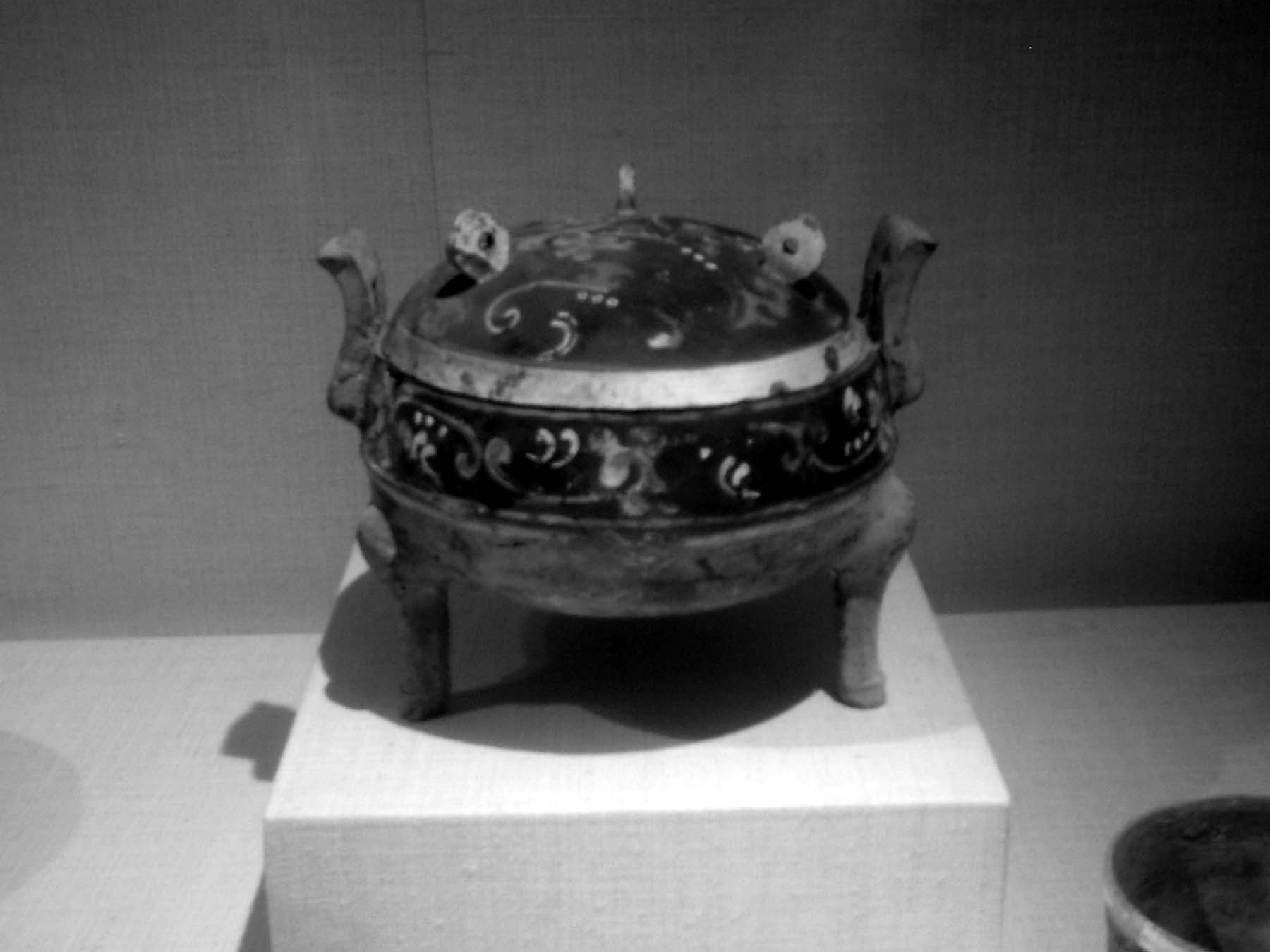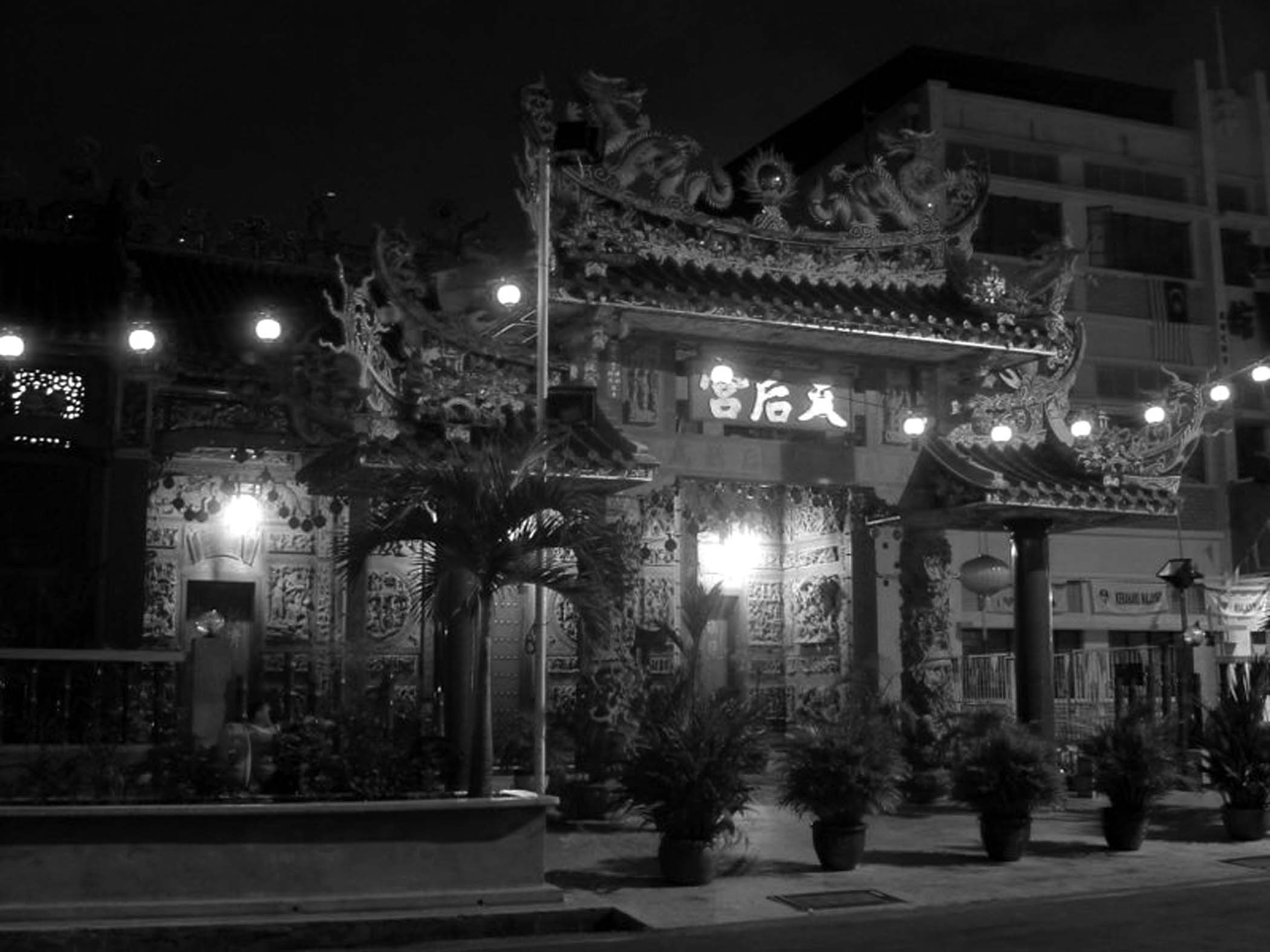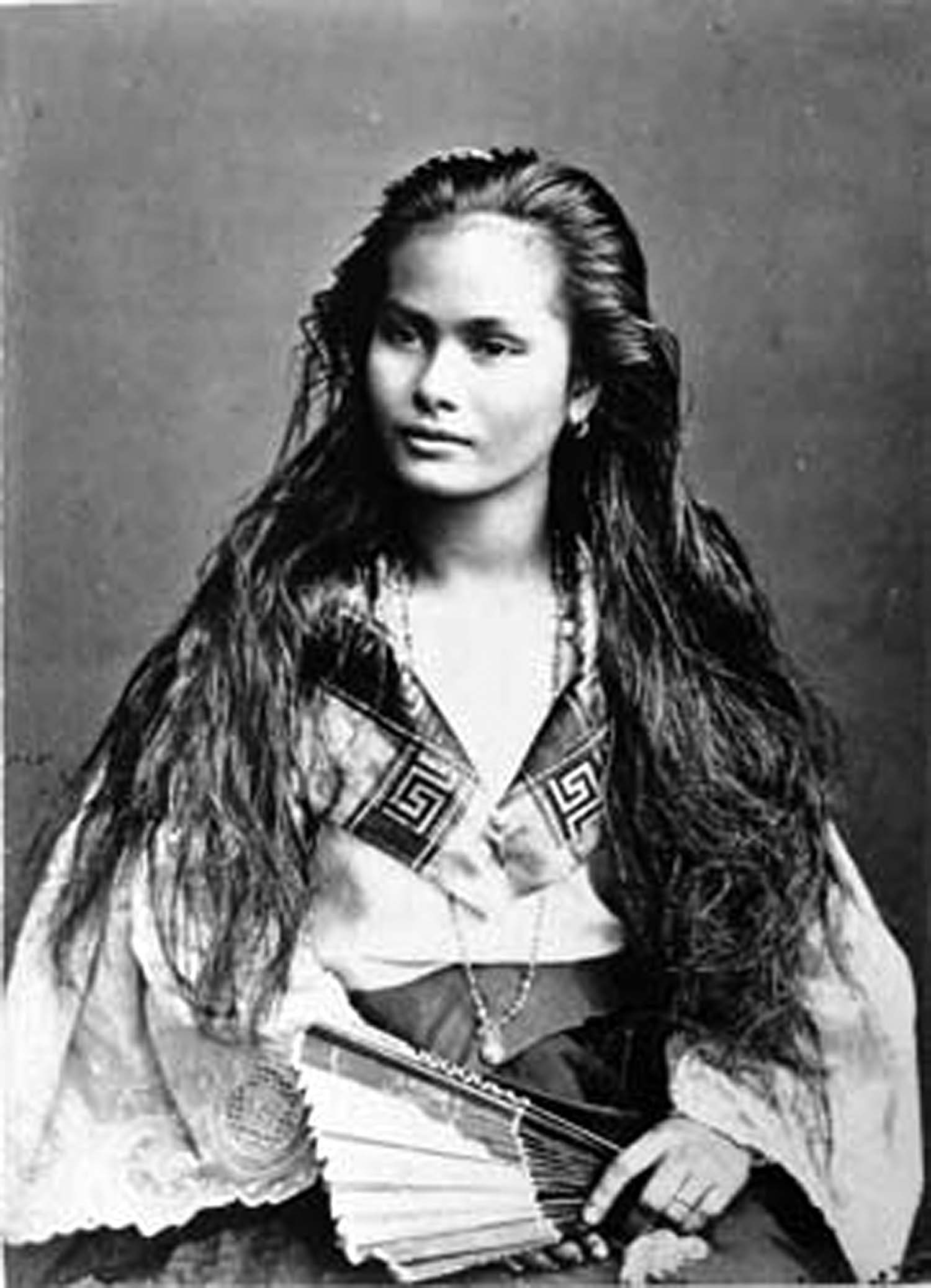Cracks On a Cauldron of Cantons: The Chinese Question in Southeast Asia
The possibility of forming national communities had been initially welcomed after centuries of living under colonial rule. But contrary to its promise of inverting the restrictive and oppressive mechanisms that the colonial powers had instituted, the new national communities instead have perpetrated the same principles of inclusion and exclusion, resulting in the communities’ both cohesion and fragility.
Among the groups which have often been marginalised in the design and implementation of national communities (held together by equally suspect concepts of national identiy) are the ethnic minorities who have thrived by negotiating the spaces between the colonising powers and the colonised indigenous majority. Their survival has been almost unproblematic for the ambiguity of their presence enabled them to reap various resources without being stymied by the colonial authorities in the same way that the latter Among subjected the indigenous majority to a myriad of conditions.

In photo is a tripod cauldron from the Han Dynasty, displayed at the Metropolitan Museum of Art in New York, taken from Wikimedia Commons.
Even more seemingly unproblematic is the continuing ascendancy of ethnic minorities who are the direct descendants of colonisers. The privilege of such ambiguity, however exacted a very high price to pay in the years following “independence” from their “host” countries. For it was within this period that the resentment and envy that the indigenous majority had accumulated for years was unleashed, facilitating a more convenient formulation of the national communities with the outright exclusion of the ethnic minorities.
Sometimes ethnic minorities constitute what Jacque Derrida called “excess” or that unwanted yet integral component of an infrastructure. Regarded as “excess,” they have been rendered as both negligible yet indispensable in the national communities. While they seem to fail to meet the criteria of membership in the national community in terms of race, language, religion and so on, they are nonetheless crucial in the functioning of the body politic mainly because they own and control the capital and capacities that serve as prerequisites for effective governance—capital and capacities that the indigenous majority have been historically deprived of.
As countries find themselves further caving in to the neoliberal globalisation process, the idea of national communities is expected to be reinforced not only as a resistance against a kind of multiculturalism but also as a means of curbing the ethnic minorities’ dominance that is indiscriminately favoured by a free market regime.
Sometimes ethnic minorities constitute what Jacque Derrida called “excess” or that unwanted yet integral component of an infrastructure. Regarded as “excess,” they have been rendered as both negligible yet indispensable in the national communities.
Despite their wealth, the ethnic minorities are far from being entirely invincible. Despite controlling the economic base of national communities, they have become easy targets of a democracy that is characterised by an exercise of numbers. They are prevented them from asserting the same political rights the indigenous majority may enjoy.
The tensions between the indigenous majority and the ethnic minority are reflective of the clashes between the political and the economic, making the simultaneous assertion of citizenship and access to capital problematic if not impossible.
In Southeast Asia, it is the Chinese that perfectly fit the category of an excess. Though they may be deprived of certain political rights, partly owing to their small population, the Chinese nonetheless lead the local economies, even becoming the most preferred partners of foreign business including multinational corporations that seek access to the local markets.1
Unlike their counterparts in Africa and Latin America, the pioneers of the Chinese communities in the region went around the countries solely for the purpose of trade and not for the possession and control of their adopted territories. The organised Chinese communities began establishing themselves around the 19th century.
As they hardly constitute a threat to the colonial institutions in most countries in the region, they were generally left alone, thus enabling them to have a head start in the acquisition of capital and development of technologies. Minimal colonial restrictions coupled with connections outside, contributed to the Chinese economic dominance that was already palpable even before the Second World War. In the early part of the 20th century, the estimated capital of the Chinese communities was comparable to that of the Europeans.
Though the Chinese have constantly been associated with impressive business acumen, there were more practical reasons behind their emergence and dominance in the economy on the national level particularly in the age of globalisation. The broad networks of the Chinese, among travellers and settlers have enhanced their access to capital. Such networks would mature in future decades, translating into an indispensable resource for ventures which have likewise grown, enabling them to withstand the fluctuations of the market. Moreover, many Chinese businesses have adopted a shift in terms of the preferred mode of financing. From internally generated funds, the Chinese have opened up themselves to other sources and arrangements such as state subsidies and corporatisation.3
“The conflation of the Chinese with their main economic role as merchants within the nationalist imagination is made possible because of the specific nature of merchant capitalism, constituting the most visible and immediately accessible venue for the appearance and disappearance of money.”
However, the massive power and wealth accumulated by the Chinese has become a subject of contention among the indigenous majority who left impoverished by their colonisers. Their years of humiliation, poverty, and repression have produced a hatred towards the Chinese who have been seen as outsiders and opportunists.
Moreover, the integration of the Chinese in national communities even through harsh assimilation processes has largely remained incomplete particularly with the continuing association of the Chinese with capitalism as they are seen to occupy the last chain in the production process that is most visible to and hurtful for the indigenous consumers.
As Caroline Hau put it, “The conflation of the Chinese with their main economic role as merchants within the nationalist imagination is made possible because of the specific nature of merchant capitalism, which, by operating within the sphere of circulation rather than production, constitutes the most visible and immediately accessible venue for the appearance and disappearance of money.” This association likewise sustains the displacement and vulnerability of the Chinese particularly those who have deliberately opted not to work as traders.
Democaratisation and Nationalisation
The democracy that decolonisation attempted to afford following the “independence” of colonised territories has been largely dubious as it failed to empower both indigenous majority and ethnic minority on equal terms. As the colonisers left the inhabitants of archipelagoes in the region that is racially polarised, decolonisation came to be aligned with nationalisation projects that resulted in the disproportionate distribution of political and economic power.
Before the “independence” of Malaysia, the Chinese, which make up around 30 per cent of the population had already been dominating the economic landscape. This changed in the eventual decolonisation process that led to compromises between the indigenous majority, the Chinese and other minority groups. Though the Chinese were able to acquire the same access to citizenship, maintain economic rights, and establish Chinese educational institutions, the Independence Constitution of 1957 legitimised the primacy of the Malay identity.4
But following the post-elections 1969 riots where thousands of Chinese were killed, it became clear to the power-holders the need to actualise previous compromises into policies. In 1971, the National EconomicPolicy (NEP) was institutionalised for the following reasons: (1) to redistribute wealth from the Chinese to the Malays and other indigenous races and (2) to eliminate the identification of race with economic function.
| Chinese and European Capital in Southeast Asia, 1937 (in million US $)2 | ||
| Countries | Chinese Capital | European Capital |
| Malaya-Singapore | 200,000 | 455,000 |
| Thailand | 120,000-140,000 | 124,000 |
| Philippines | 100,000 | 376,000 |
| Indo-China | 80,000 | 384,000 |
Over time, NEP led to the rise of a new middle class composed of the indigenous majority, the bumiputras. On the one hand, the NEP brought more effective assimilative measures through the eventual closure of Chinese educational institutions. On the other hand, the NEP heightened an exilic ethos. Although the NEP did not pose a direct threat to the Chinese, the NEP nonetheless demanded the Chinese kowtow to Malay interests.

Photo by Daniel Berthold
By the time NEP expired, the target of distributing 30 per cent of the total Chinese wealth to the Malays was not met. In 1990, Malay ownership stood at 20.3 per cent while Chinese ownership was pegged at 44.9 per cent5.
Although the Chinese survived despite the NEP, their political participation almost diminished even as they had been fodder to the political rhetorics of top Malay officials including former Malaysian Premiere Mahathir bin Mohammed. The elections, which have since been dominated by the United Malays National Organisation (UMNO) have not necessarily widened stakeholding among groups. The elections were designed more as a legitimising practice to Mahathir’s authority and the Malays’ primacy.
While the NEP was effective in quelling dissent, Indonesia’s “Guided Democracy” miserably failed to deliver because of an overt crony capitalism that appears to devalue citizenship before the eyes of the indigenous majority. Contrary to its promised growth, equality and stability, the Suharto regime only exacerbated conflicts among different classes and ethnic groups.
The links of Suharto to the Chinese community began in his work as part of a military contingent in Java in 1957 – where the Chinese traders supplied the requirements of the military. It was also around this period that he met Chinese business tycoon and long-time supporter Liem Sioe Liong. Far from strengthening indigenous ventures through his reign, Suharto significantly weakened these as he awarded parcels of the industries including rattan and timber to his Chinese friends, who in turn allowed their ventures to function as a money laundering machinery for Suharto.

Sources: CNN (28 June 1998). “Reports allege organized raping during Indonesian riots.”; and Sumardi, Sandyawan. “Rape is Rape.”
Photo from Wikimedia Commons
The Chinese communities were nonetheless pleased with the “economic reforms” in the 1980s. In 1990, there were around new 40 bank licenses, mostly owned Chinese business groups. This, however changed in the 1990s when Suharto began reaching out to the Muslim communities and even went as far as asking the Chinese in a televised address, to give up as much as 25 per cent of their equity to cooperatives (Freedman, 110).6 This not only legitimised the attacks of the indigenous majority to Chinese commerce, which is said to moved around US$26 billion of private capital to Singapore and elsewhere. It also exemplified the “divide and rule” method Suharto had been employing in his bid to keep the reins of government to himself.
It is important to note that while the indigenous petty bourgeoisie had been integral in reinforcing nationalist sentiments and reechoing Suharto’s declarations on Chinese ownership, they failed to organise themselves as a bloc that could paralyse Suharto’s government since “their political activity has taken the form of a constant appeal for protection and favour.”7 The violence emanating from this particular address and subsequent events including the aftermath of the Asian financial crisis, had left the small Chinese shop-owners at the mercy of angry mobs.
Immediate “democratisation” has also not worked smoothly in the region mainly because of the emphasis on a nationalisation. In that sense, numbers count more, resulting in a dirty scramble for power.
Though there are no cases in Southeast Asia that can exactly mirror the hostility between the indigenous majority and white settlers in Africa arising from immediate “democratisation”, immediate “democratisation” has also not worked smoothly in the region mainly because of the emphasis on a nationalisation that sells among the indigenous majority. In that sense, numbers count more. Further, the process has resulted in a dirty scramble for power. The leaderships which emerged out of this exercise only became captives to markets which were far more mature.8
Perishable Patrimonies
Hatred towards ethnic minorities also becomes even more intense in instances when ownership of national economic symbols is in the hands of the Chinese or any ethnic minority for that matter. Or when there is evidence of Chinese support for corrupt political regimes—in the end making the ethnic minority a target of reprisal in the culmination of popular movements.
In Burma, the Burmese teak, known for its elegant dark color and unusual, is among the commodities the ruling military junta, the State Peace and Development Council (SPDC) has peddled to the global market as SPDC attempts to raise resources for what it claims as economic development. The junta has been encouraging the private sector in building businesses out of this rare wood, that it has exempted teak for export from commercial taxes. Though teak should have been regulated by virtue of its nature as a national patrimony and its importance in the ecosystem, these have been indiscriminately harvested by Burmabased Chinese consortia led by people with dubious linkages with SPDC.
Apart from teak, Burmese jade has also been transformed as a major revenue earner through businesses managed by influential Chinese such as Lo Hsing-han, who is said to be worth some US$600 million. As Amy Chua wrote, “Burma’s gems are dominated by thriving Burmese Chinese at every level, from the financiers to the concession operators to the owners of scores of new jewellry shops that sprang up all over Mandalay and Rangoon. Needless to say, SPDC officials are also handsomely paid off at every level.”

Photo from Greenpeace
Dubbed as the “Godfather of Heroine,” Lo Hsing-han through his company Asia World has also been awarded hydropower projects in Kachin state and other contracts worth US$11 billion. The company remains strong owing to its connections in China, that continues to refuse the imposition of sanctions on Burma.
The enormous control of the Chinese in Burma’s economy would certainly have an impact should violence erupt. Along with capital flight, the measly social capital of the ethnic Burmese might make the noble aims of democratisation challenging.
Of Colour and Class
Crony capitalism was likewise experienced during the reign of Ferdinand Marcos whose administration relaxed citizenship laws—a move that granted protection for Chinese residents and at the same time enriched Marcos and his henchmen. Among the Chinese businessmen associated with the dictator was Lucio Tan. Tan’s friendship with Marcos and later on, with former President Joseph Estrada only demonstrates the contamination of the electoral process by vicious exchanges of favours.9
These instances bolster the common association of the Chinese with money, specifically dirty money. Moreover, they significantly contribute to the deletion of the crucial role the Chinese played in the very formation of a Philippine national community in the late 1900s, when a collective forgetting began with the reconfiguration of racial categories during the American occupation.

As the category indios was phased out, so was the category mestizos. Unlike in the present when the word mestizos brings to mind fairskinned Spanish aristocrats, mestizos originally referred to the christianised children of Chinese immigrants and locals. Unlike the indios, the mestizos had access to education, one which enabled heroes like Jose Rizal and the rest of the illustrados to adopt and disseminate European liberalism. After the Treaty of Paris, the mestizos came to be the Americans’ local counterpart.
The preference for white and dislike of the Chinese were exemplified by that policies that nationalised Philippine industries—The Filipino First Policy introduced during the presidency of Carlos P. Garcia. The Retail Trade Nationalisation Act of 1954 was crafted to reverse the patterns in the economy then where “70 per cent of the domestic trade and 80 per cent of the foreign trade are in the hands of aliens, principally Chinese and American.”10
The Retail Trade Nationalisation Act of 1954 actually exempted juridical entities of the United States.11 Moreover, it was around this time when the Bell Trade Act and Laurel- Langley Agreement were enforced, paving the way to the parity rights amendment which placed both American and Filipinos on equal footing in terms of the access to and exploitation of natural resources in exchange for the higher tariffs the government may impose on imported goods. It was also the Bell Trade Act which allowed the 99-year lease of facilities and other resources by the US military.
The preference for white and dislike of the Chinese were exemplified by that policies that nationalised Philippine industries—The Filipino First Policy and the Retail Trade Nationalisation Act.
The resulting historical amnesia about our ongoing bondage with the US has led to the relegation of the Chinese in the economic sphere. As Charlson Ong asserted, “The Chinese has always been the invisible person in Philippine society. Seen yet not yet seen; inscrutable, unknown. He lives in the heart of the city, conducting much of the commerce that created a nation, yet is consigned to the periphery of the collective imagination—little more shadow or caricature.”
The minimal if not obvious political participation of the Chinese has reinforced the social knowledge that equates the Chinese with money, feeding into the violent incidents of kidnapping in the recent past.
Racial categories inform the access of foreign or even transnational corporations to certain segments of the market. In Malaysia, for instance, industrial economic zones which offer incentives such as tax holidays and restrictions on unionisation among others have been opened to foreign companies but restricted to equally capable native Chinese.12
Conclusion
If in the past there appears to be a fair barter between political power and economic protection, the relationship between the political and the economic has evolved into one that placed the former at the mercy of the latter. Coupled with the disastrous consequences of crony capitalism as well as coalitional politics13 to national patrimonies and electoral processes, the political is severely weakened by the neoliberal globalisation that increasing invests unprecedented power to the economic.
Unless governance failures are corrected with a conscious shift from neoliberal paradigm, one’s political development will be hostaged by power strugles – leaving on their tracks dangerous consequences to democracy and diversity.
References
Anderson, Benedict (2003). Imagined Communities: Refections on the Origins and Spread of Nationalism. Pasig City: Anvil.
Bland, Ben (11 May 2009). “An Australian Company’s Hot Potato.”
Bello, Walden et. Al (2005). The Anti-Development State: The Political Economy of Permanent Crisis in the Philippines.Quezon City and Bangkok: The Department of Sociology, University of the Philippines and Focus on the Global South.
BusinessWorld. (30 May 2008). “Strange but True: Myanmar’s Dark Secret.”
Chua, Amy (2004). World on Fire: How Exporting Free Market Democracy Breeds Ethnic Hatred and Global Instability.New York: Anchor Books.
Coronel, Sheila (1999). “Into the Light.”
Freedman, Amy L (2000). Political Participation and Ethnic Minorities: Chinese Overseas in Malaysia, Indonesia, and the United States.London and New York: Routledge.
Hau, Caroline S (2000). Instik: An Anthology of Chinese Filipino Writing. Pasig City: Anvil Publishing Inc..
________ (2000). Necessary Fictions: Philippine Literature and the Nation 1946-1980.Quezon City: Ateneo University Press.
Koon, Hang Pek (1992). “The Chinese Business Elite in Malaysia.”In Southeast Asian Capitalists. Edited by Ruth McVey. Ithaca: Cornell University Southeast Asia Program.
Mackie, James (1992). “Changing Patterns of Chinese Big Businesses in Southeast Asia.” In Southeast Asian Capitalists. Edited by Ruth McVey. Ithaca: Cornell University Southeast Asia Program.
Ong, Charlson (2002). “A Bridge Too Far: Thoughts on Chinese Filipino Writing”. In the Filipiniana Reader. Edited by Dr. Priscelina Patajo- Legasto. Los Baños: Open University.
Robison, Richard and David S.G. Goodman (1996). The New Rich in Asia: Mobile Phones, McDonalds and Middle-Class Revolution.London and New York: Routledge.
Endnotes
1 James Mackie, “Changing Patterns of Chinese Big Businesses in Southeast Asia.,” In Southeast Asian Capitalists, Edited by Ruth McVey (Ithaca: Cornell University Southeast Asia Program, 1992),165.
2 Ibid, 164
3 Amy L. Freedman, Political Participation and Ethnic Minorities: Chinese Overseas in Malaysia, Indonesia, and the United States (London and New York: Routledge, 2000), 15 and Mackie, 165.
4 Freedman, 56-57.
5 Ibid, This figure is said to be misleading for it did not account for the Malay’s equity in local but non-Malay enterprises
6 Ibid, 110.
7 Richard Robison and David S.G. Goodman, The New Rich in Asia: Mobile Phones, McDonalds and Middle-Class Revolution (London and New York: Routledge, 1996), 90.
8 Amy Chua discussed this extensively in Part 2, “Political Consequences of Globalisation” specifically Chapter 7, “Backlash against Democracy.” The skewed democracy resulting from a retaliatory nationalism has bred an inefficient minority rule that is incidentally supported by the World Bank and the International Monetary Fund. Such nationalism opens up local markets in a ways that render these vulnerable to the collusion of cronies and foreign markets. In the end, especially when such minority rule is toppled and replaced, countries find themselves in neck-deep debts, almost incapacitating them to initiate and implement reforms—leaving them in a vicious cycle of borrowing which mostly benefits power-holders and their allies. World on Fire: How Exporting Free Market Democracy Breeds Ethnic Hatred and Global Instability (New York: Anchor Books, 2004).
9 See Sheila Coronel, “Into the Light,” Retrieved from <http://www.pcij.org/imag/PublicEye/lucio.html> Last accessed on June 18, 2005.
10 Teodoro Agoncillo, as quoted in Caroline Hau, Necessary Fictions: Philippine Literature and the Nation 1946-1980. (Quezon City: Ateneo University Press, 2000), 165.
11 Ibid, 165.
12 Robison, 65.
13 Coalitional politics suggests the alliance of forces from the Left, Right and Center—a formation which began right after the ouster of Marcos and the ascendancy of former President Corazon Aquino. While the process unites different stakeholders at the beginning, it is unable to consolidate these forces in the long run. In fact, it ends up wallow in the same cronyism that it initially wanted to dismantle. See Patricio N. Abinales, „Governing the Philippines in the Early 21st Century”, Center for Southeast Asian Studies, Kyoto University, (Unpublished paper, 2004)






 The
The 
 Isis Resource Center holds one of the largest feminist collections of materials in the Global South. With 40 years of publication experience, Isis holds a vast collection.
Isis Resource Center holds one of the largest feminist collections of materials in the Global South. With 40 years of publication experience, Isis holds a vast collection.